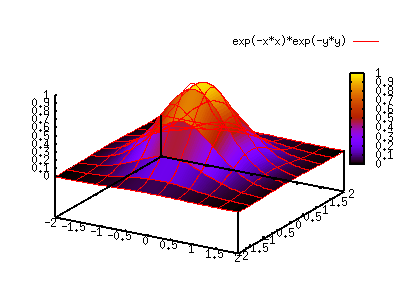

You need a datafile with really empty fields, like. Also a set datafile missing - doesnt help. The set title command is an easy way to add general context to a plot. Gnuplot seems to get confused with -as only column content. The beauty of this solution is that TeX renders all the labels and you can edit them by editing the name.tex file in which they're stored. In this chapter, well discuss all the means that gnuplot offers to put ancillary. This relies on the graphicx package and possibly on the epstopdf package if you're not using MacTex.

You can include that file in your main document using \input set terminal latex size 7cm, 5cm set output eg2.tex set format xy g set title This is a plot of ysin(x) set xlabel This is the x axis. increment default set samples 50, 50 set title Simple Plots font ,20 norotate g gnuplot. ratio 1 (4) gnuplot> set cbrange 0:100 (5) gnuplot> set pm3d map (6) gnuplot> set title Figure 1 (7) gnuplot> splot n3.dat matrix. The key may be turned off by requesting set key off or unset key.Individual key entries may be turned off by using the notitle keyword in the corresponding plot command.

That will produce a plot.tex file that includes the plot using basic TeX statements. py-gnuplot is a python plot tools based on gnuplot. The set key command enables a key (or legend) containing a title and a sample (line, point, box) for each plot in the graph. It can bechanged by using the titleoption.
#GNUPLOT SET TITLE PORTABLE#
To get LaTeX in labels or legends in Gnuplot, you need to use one of the terminals that produce LaTeX code.įor example, you could use the latex terminal: set terminal latex A line title for each function and data set appears in the key, accompaniedby a sample of the line and/or symbol used to represent it. gnuplot can produce output directly on screen, or in many formats of graphics files, including Portable Network Graphics.


 0 kommentar(er)
0 kommentar(er)
